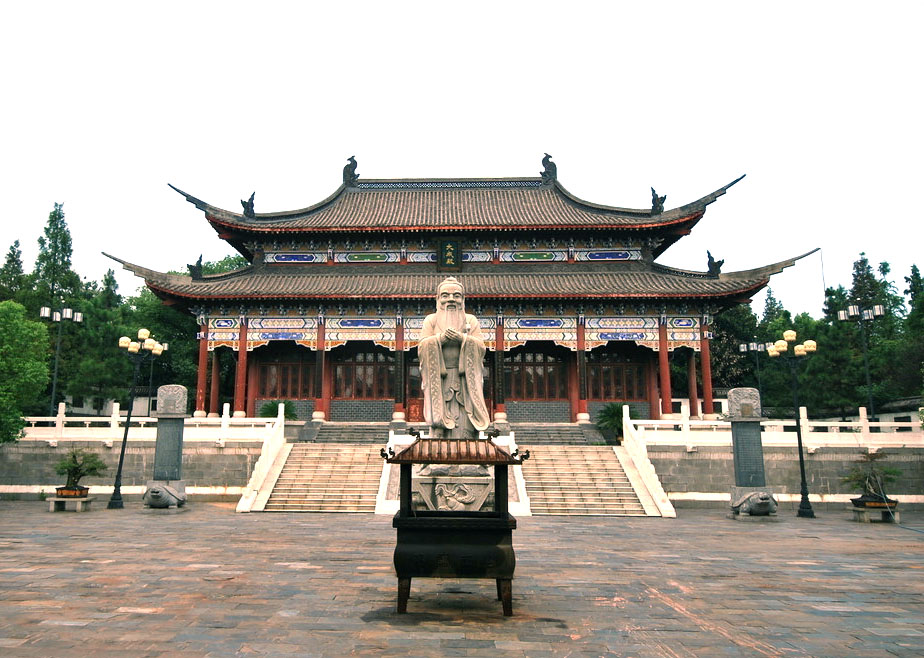Temple and Cemetery of Confucius and the Kong Family Mansion

The Confucius’ Temple
Located in Qufu, Shandong Province, the Temple and Cemetery of Confucius and the Kong Family Mansion are three important sites of Confucianism, which together are called “San Kong.”
The Confucius’ Temple
Built to commemorate him in BC 478, the Confucius’ Temple has been destroyed and reconstructed over the centuries. Today it is composed of nine courtyards, one within another. The architecture is very symmetrical. Along the 1,300-meter north-south axis hinges over 460 houses and palaces, 54 gateways and 13 pavilions, housing tablets dedicated by the royals of the previous dynasties.
Together with the Summer Palace in Beijing and the Mountain Resort of Chengde, the Confucius’ Temple in Qufu is one of the three largest ancient architectural complexes in China. It garners fame not only for its grandness, but also for the rich cultural relics found there. The 2,100 pieces of steles remaining from various dynasties make for a fine exhibition of calligraphy and stone sculpture.
The Kong Family Mansion
The Kong Family Mansion has nine courtyards, one within another, and 463 rooms. On the east and west sides of the axis are found respectively the clan temple and the academy. The middle of palace is divided into offices in the front and private houses and gardens behind.
This is a combination of offices and private houses, typical of the aristocratic residence of ancient China. Confucius’ descendents cherished the intellectual glory of their family. These ritual instruments they collected are a symbol of the social-political principles on which the ancient monarchical society, Confucius’ political ideal, was founded.
The Confucius’ Cemetery
The Confucius’ Cemetery is in the north of the city of Qufu. It is the cemetery of Confucius and his descendents, the biggest and most enduring clan cemetery in the world. Confucius died in BC 479 and was buried by Si River in the north of Qufu. His descendents were all buried around his grave, making the cemetery what it is like today.
The Confucius’ Cemetery has been in use for 2000 years. The Confucius’ Cemetery is also a great stone tablet garden, displaying calligraphy of many artists throughout the history. It plays an indispensable role in the study of the development of politics, economy, culture and burial practice of ancient China.
